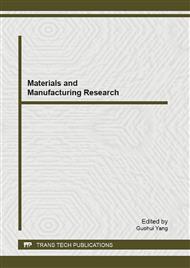p.102
p.108
p.112
p.116
p.120
p.124
p.134
p.140
p.147
Polycrystalline Silocon-Oxide-Nitride-Oxide-Silicon Flash Memory on SiO2 and Si3N4 Buffer Layer for System on Panels Application
Abstract:
For the system on panel applications, we fabricated and analyzed the polycrystalline silicon (poly-Si) silicon-oxide-nitride-oxide-silicon (SONOS) memory device on different buffer layer such as oxide or nitride. The threshold voltage (VT) and transconductance (gm) are extracted from each device and the X-Ray Diffraction (XRD) measurement is carried out to interpret these characteristics. The results show the device on oxide layer has higher mobility and lower VT than on nitride layer. From the XRD spectra, it can be explained by the fact that the grain size of poly-Si on oxide layer has larger than on nitride layer. The both devices show program/erase characteristics as the potential of SOP memory devices.
Info:
Periodical:
Pages:
120-123
Citation:
Online since:
January 2013
Keywords:
Price:
Сopyright:
© 2013 Trans Tech Publications Ltd. All Rights Reserved
Share:
Citation:


